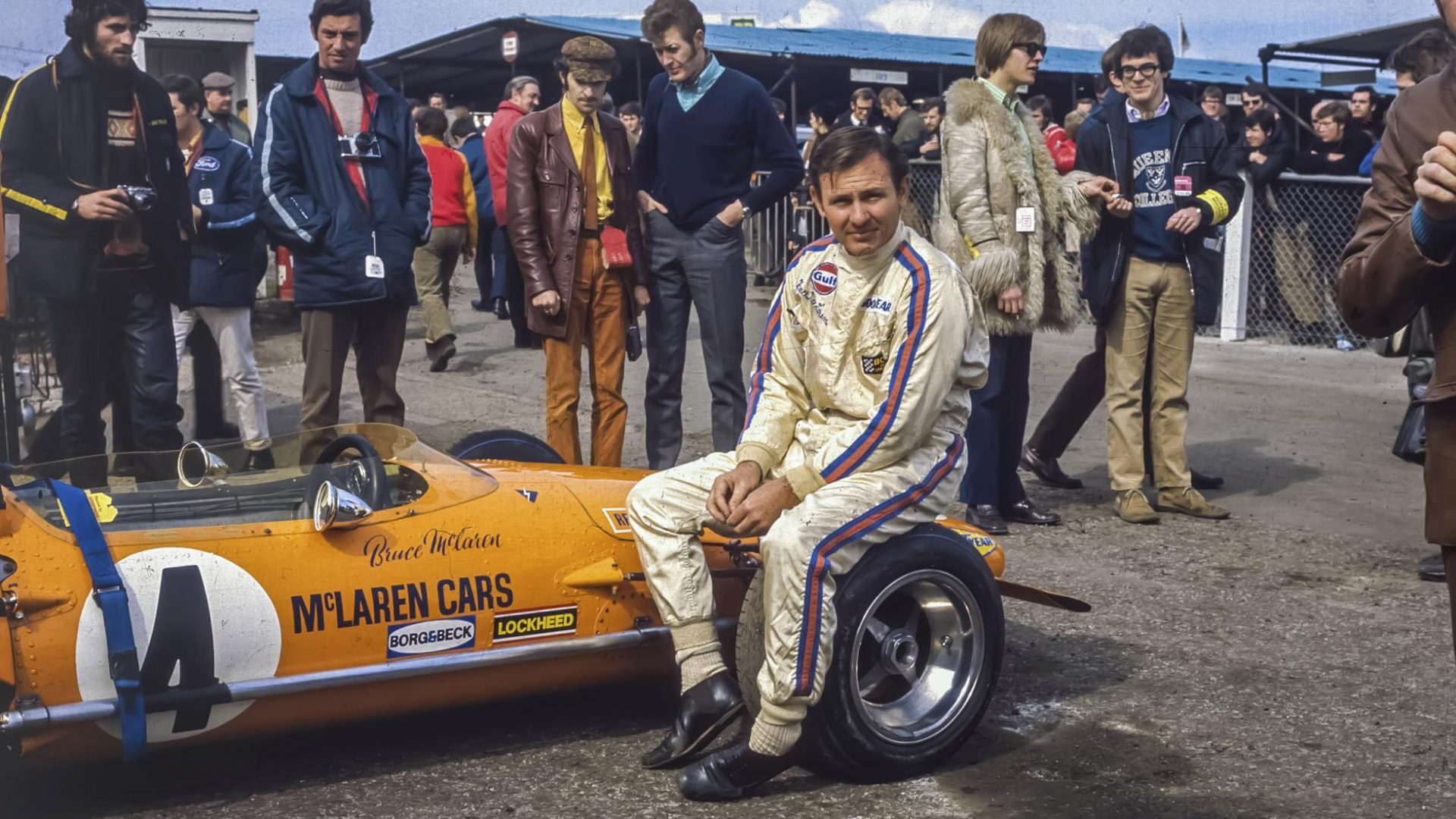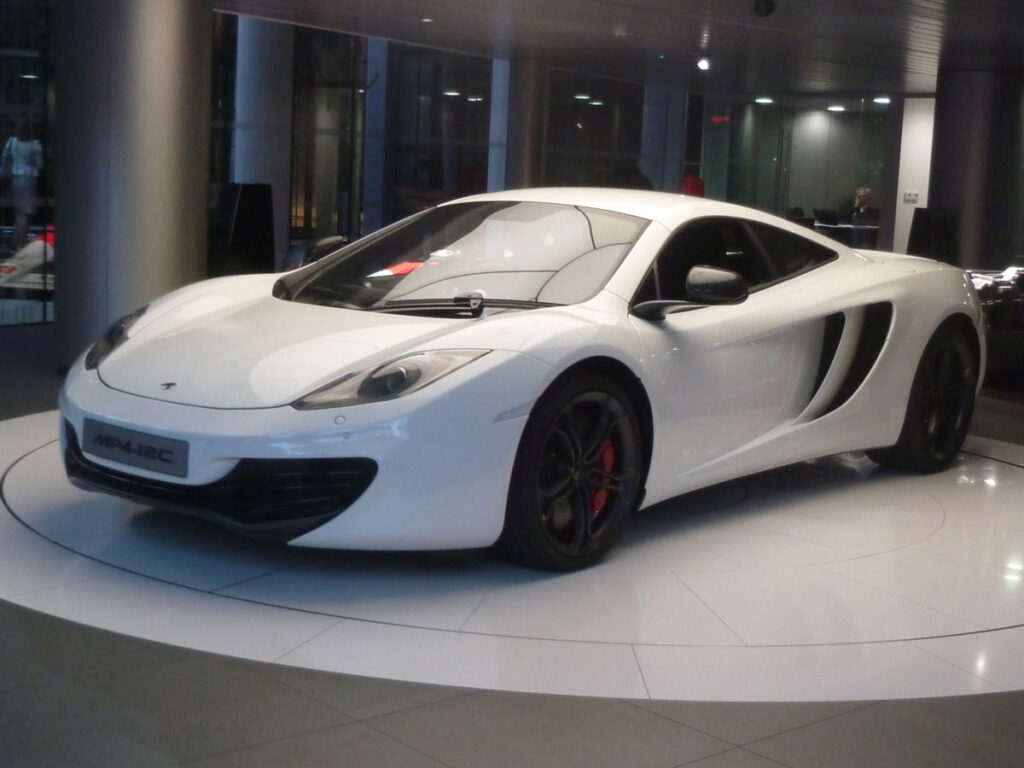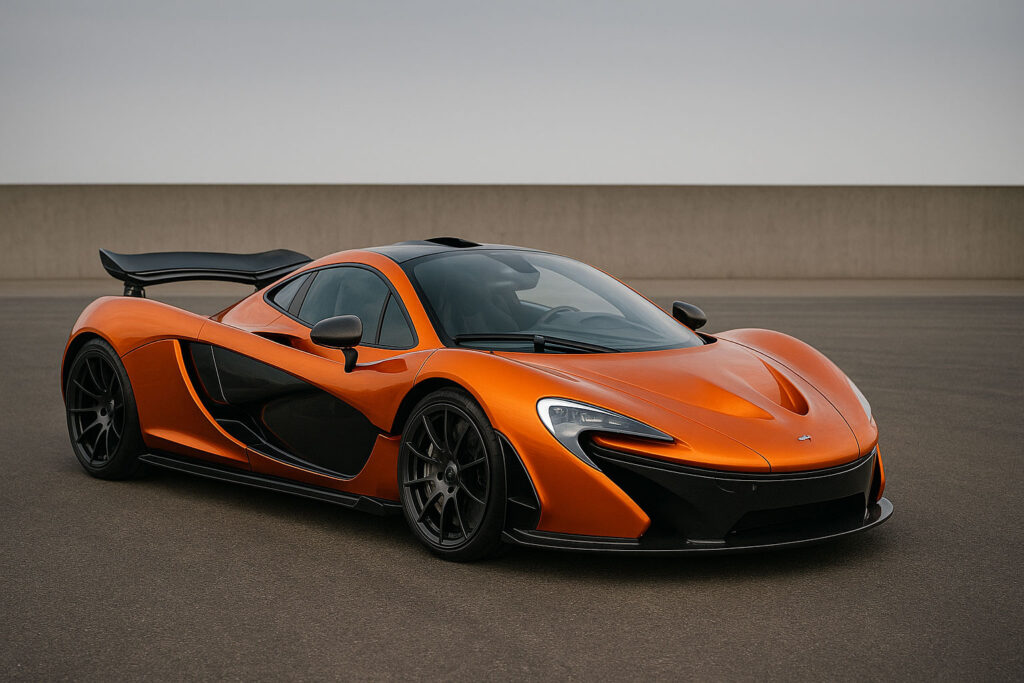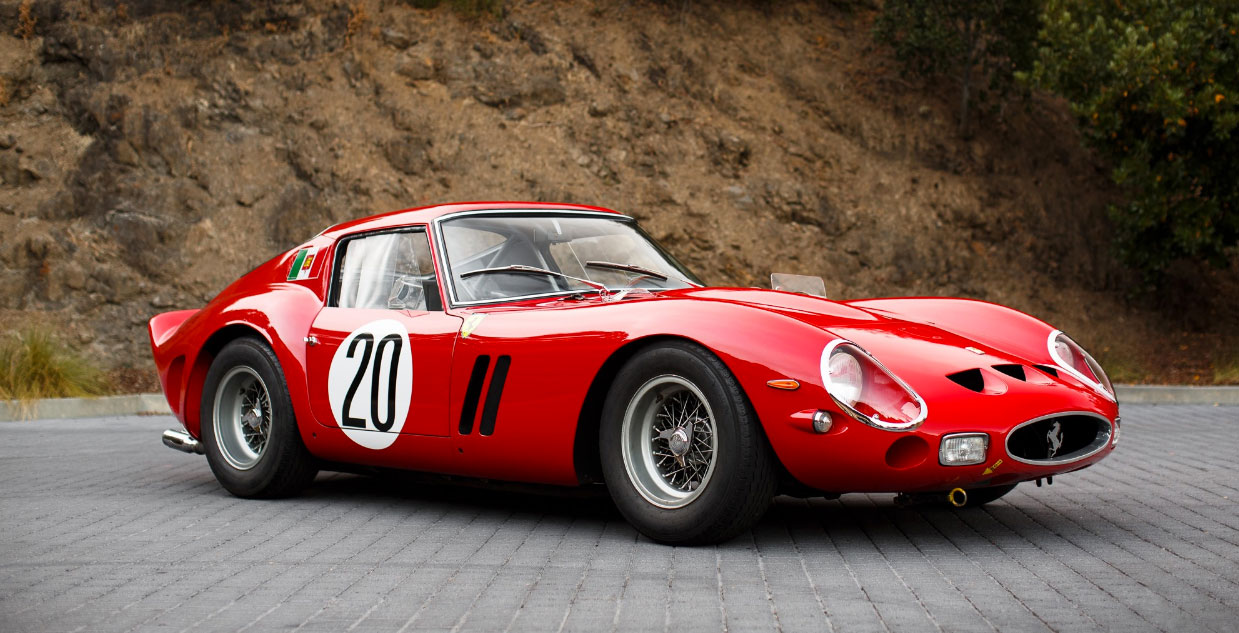From Formula One to F1, P1™ and W1 – the Evolution of McLaren Sportscars
Published on Jun 02, 2025 at 2:32 PM | By David Connor

Born in Auckland, New Zealand, in 1937, Bruce McLaren won four Grand Prix during his track career and, for 44 years, held the world record as the youngest driver ever to win a world championship Formula One Grand Prix.
He also took his eponymous racing team on to great successes in not just Formula One, but Can-Am and Indianapolis.
Bruce McLaren died at the age of just 32, crashing his Can-Am racer at England’s Goodwood circuit.
Six years earlier, McLaren had written the following portentous words in his book, From the Cockpit:
‘To do something well is so worthwhile that to die trying to do it better cannot be foolhardy. It would be a waste of life to do nothing with one’s ability, for I feel that life is measured in achievement, not in years alone.’
Murray had already been hugely successful in his time at Brabham and wasted no time in continuing his stellar rise after accepting Ron Dennis’ invitation to join McLaren as Technical Director in 1986.
The MP4/4 Formula One car won 15 of the season’s 16 Grands Prix, and secured Ayrton Senna’s first Drivers’ Championship.
The Murray and McLaren partnership was, to say the very least, an exceptionally successful project.
From Formula One to F1
Four McLaren directors – Ron Dennis, Creighton Brown, Mansour Ojjeh and Gordon Murray – found themselves sitting in Milan’s Linate airport after the 1988 Italian Grand Prix.
With nothing to do except wait for their flight to be called, they started talking about this and that.
Before they’d been summoned to the departure gate they had agreed to design, engineer, build and sell the finest road car the world had ever seen.
Clearly, they weren’t lacking either ambition or confidence.
From the outset, the objective was to showcase McLaren’s technological prowess and flair for innovation.
They didn’t just want to add a McLaren-badged road car to a supercar showroom containing Porsche’s 959, Ferrari’s F40, Jaguar’s XJ220 or Bugatti’s EB110: they wanted to create a whole new paradigm and establish a benchmark for performance and driver-focussed capability that had no precedent.
Gordon Murray scribbled down a preliminary production plan on four sides of A4 paper.
The simple, pared-back boldness of his vision is remarkable even today.
‘No compromise, no plastic, three-seat layout, use F1 technology to create ground effect, automatic retractable aero devices, composite monocoque and body, survival cell à la F1, F1 engine, six-speed transaxle, carbon clutch, electronic differential,
200mph-plus top speed, more than 1g in lateral acceleration, F1 push- or pull-rod suspension, carbon brakes, pedal, steering and gearchange position to suit buyer…’
The first two words – ‘no compromise’ – are embedded in every aspect of the car’s DNA. No details were overlooked, no corners cut, no expenses avoided.
The naturally aspirated 6.1-liter, V12 BMW powerplant generated the highest power output for any engine of its size, and delivered over 620bhp. This much power created a lot of heat. So, the engine bay was lined with the best heat reflector available – pure gold.
Reviewers were compelled to dig deep into their reserves of superlatives, as evidenced by Roger Bell’s effusive eulogies to the F1 in Car Magazine: ‘My mind is blown. My soul corrupted. Absolute power has cast its spell. Solo or ménage a trois, I don’t mind. Put me back in the middle, behind the central wheel of the world’s fastest driving machine. I need more, another fix. Two days on the loose in McLaren’s three-seater megacar, and I’m hooked. You would be, too. The 627-horsepower F1, which humbles all previous slingshot exotics, is just what design director Gordon Murray pledged it would be: the ultimate motoring experience, the closest sensation to a street-legal grand prix car.’
Just 106 F1s were ever built (only 64 of them as road cars) and today they occupy the same rarefied strata of value and rarity as the handful of other cars that are worth pretty much the same whether they’re in concours condition or disassembled in half a dozen cardboard boxes – think Countach, 250 GTO, DB4 GT Zagato, etc.

To illustrate the point, Rowan Atkinson twice crashed his, presumably when possessed by his inner Mr. Bean.
When he bought the car it cost him about $900K. On the more memorable and noteworthy of his crashes, the comedian’s mishap resulted in an insurance claim of $1.4 million, at the time the biggest ever car insurance claim in the UK.
The car’s repair took over a year to complete. A few years later, he sold it for a quite extraordinary $11.3 million profit.
Today, just a copy of the original owner’s manual (only 200 were printed) would cost you at least $8,000.
Thirty years on, the F1 is still the fastest naturally aspirated road car ever built, although that accolade couldn’t have been further from Gordon Murray’s mind, then or now.
“Performance? Couldn’t give a monkey’s. I’m not interested in power figures, top speed, lap time, and I never was with the F1. It just happened to be quick. We only ever calculated the top speed – at 235mph – to pick top gear and set the final-drive ratio. We didn’t test the top speed until five years later.”
Jay Leno has called it the greatest car of the 20th century. Numerous celebrities have found a place for it in their garages, among them George Harrison, Ralph Lauren, Elon Musk, Lewis Hamilton, Nick Mason and the Sultan of Brunei.
George Harrison became a close personal friend of Gordon Murray, having sat next to him on Concorde’s inaugural flight to Rio De Janerio.
Harrison was only on the flight because Bernie Ecclestone, who had booked the seat next to Murray, couldn’t make it – so the ticket became available.
It turned out that the Beatle was a Formula One and car fanatic, and the engineer was a huge rock ‘n’ roll fan, and they both had a love of Bob Dylan’s work in common.
“Are you going to sell me one of your cars?” Harrison later asked Murray, to which the latter replied, “Well, you didn’t mention it when I told you about it, so I thought you weren’t interested.”
Harrison’s repost? “Of course I’m interested. If I brought out a new CD, you’d buy it, wouldn’t you?”
Murray is on record as saying that Harrison had asked for various symbols of Ganesh, the Hindu elephant god, to be concealed in and around his purple F1 (chassis number 25), with at least one placed where no-one would ever find it.
Murray and his team at McLaren duly obliged.
Whatever Next?
How do you follow-up something as epochal, iconoclastic and ground-breaking as the F1?
Well, you start by turning yourself into a sportscar manufacturer.
When McLaren starting development work on the MP4-12C (naming protocols are arguably not the firm’s strongest point), they were following in the lonely footsteps of Enzo Ferrari, the only other Formula One regular to also have a bit of a side-line in lively road cars.
Built alongside the Formula One cars at McLaren’s futuristic facility near Woking, England, the firm’s exacting approach to engineering soon became apparent to anyone lucky enough to visit the factory.
Most were taken aback by the almost sepulchral, clinical whiteness of the surroundings. There were (and are) no oily rags or dirty fingerprints anywhere to be seen.
You won’t find an abandoned wrench lying on the floor or a half-eaten sandwich on top of a toolbox.
This is a temple to engineering purity and an environment that is wholly unforgiving to anything other than 100% commitment and the pursuit of excellence in all things automotive.
Some operating theatres are less hygienic than McLaren’s Woking factory.
The MP4-12C (later sensibly rebranded as the 12C), established the firm as a serious contender for the attention of people who usually sent their money to finance departments in Modena, Sant ‘Agata or Zuffenhausen.

Some reviewers, however, felt that it somehow lacked some of the ‘soul’ to be found in its competitors, despite being evidently a highly accomplished and brilliantly engineered performer.
Others thought that perhaps ‘soul’ was being confused with the sort of prima-donna-ish demands and idiosyncrasies that people had long endured courtesy of a few highly-strung Italian stallions and bulls over the years.
Maybe (whisper it) the McLaren was just better engineered, more reliable, less temperamental, and easier to live with?
Either way, the next chapter in the McLaren story needed to blow the competition out of the water and lay down a gauntlet to any would-be pretender.
Enter the McLaren P1™.
The ‘1’ in the name tells you that this was the apex predator in the McLaren pack, and that was very much the case with this extraordinary car, which became the world’s first hybrid supercar.
It also heralded some ferocious marque competition between what became known as the ‘Holy Trinity’ of hypercars at the time: the P1™, the Porsche 918 Spyder and the Ferrari LaFerrari.

Only 375 were built, with all sold within months of the order books opening.
Numbers aren’t everything of course, but the P1™ facts and figures really do merit a closer look.
903bhp, 664lb-ft of torque, 0-62mph in 2.8 seconds, 217mph top speed.
Your author hasn’t driven an F1, or P1™, but he has very recently driven a McLaren 720S Le Mans – a model with just 50 examples built.
Now, this car also takes you from 0-62mph in 2.8 seconds and, in case you’re wondering, that is bewilderingly, mind-numbingly, incalculably rapid.
The gear change is as lightning-fast, punchy and slick as a chain-fed gun and the twin-turbos spool up quicker than you can think before unleashing a tidal wave of grunt that hurtles you towards new and unexplored horizons faster than your brain, eyes or ears can compute.
It takes off like a nervous cheetah at a firework display and just keeps building momentum until you run out of courage, skill or road.
It is utterly alive, visceral and commands the utmost respect from anyone fortunate enough to grip the Alcantara wheel and feel a light sweat forming on their brow.
And if you’re wondering what sort of person actually buys, drives and thoroughly enjoys a 720S, well, you need look no further than Alex Hirschi, AKA Supercar Blondie, who likes the car so much she’s had variations in DayGlo highlighter colours, SB-themed wraps and a shark-inspired body kit and bespoke paint job.
A Supercar Blondie review of the 720S points out the car’s evolutionary journey – “In fact, the fabled F1 was one of the main sources of inspiration for the 720S. This included the twin-hinged butterfly doors and the air channels for the engine on those doors. Thin LED tail lights were used at the rear, similar to those on the P1 hypercar.
It was partially inspired by the great white shark, according to the marque.
That also influenced its teardrop-shaped cockpit.”
In 2018 came the McLaren Senna, a car built to honour the legendary driver’s time with McLaren and designed to be worthy of carrying his name.
“Part of the Ultimate Series, the Senna was designed as a track-focused, but road legal, hypercar. The vehicle was limited to 500 units, plus 115 limited-edition versions such as the LM or the GTR.” – Supercar Blondie.
In 2019, the wholly track-focussed Senna GTR proved it could live up to its manufacturers claim that it set the fastest lap times outside of a McLaren Formula One car.
If rarity is your thing, however, look no further than the McLaren Senna XP.
As a Supercar Blondie review of the car points out, “XP is short for experimental.
These vehicles were originally made as validation prototypes and then sold to be completely rebuilt by McLaren. There are only 10 XP models in the world, but – in reality – each car is a one-of-one vehicle.”
SBX was incredibly fortunate to bring a McLaren Senna XP to auction in January 2025.
The auction listing stated that, “This particular 2019 Senna XP comes with an XP-90001 build plate, believed to be the first Senna to come out of the McLaren factory. A rare world-beating hypercar in standard form, the McLaren Senna XP is on a different level of exclusivity. Like all Sennas, it features the incredible form-follows-function all-carbon fiber body, the ferociously powerful 4.0L twin-turbo V8, and McLaren’s cutting-edge dynamics.”
The online hammer went down on a price north of $1,193,000.
Fast Forward to the Future
And so we come to the latest McLaren designed to break records, smash expectations and set new benchmarks, the W1, which is destined to appear in 2026.
In their owns words: ‘Not just any car can be given the ‘1’ title. ‘1’ cars have to be the ultimate expression of our supercar first principles. The same principles that forged the F1 and the P1™’
With any other manufacturer, you might think you’re catching a whiff of hyperbole.
Not McLaren.
The result of their trademark innovation and willingness to work from first principles is a car with an entirely new engine mated to all sorts of hybrid wizardry and aero sorcery.
It is the fastest accelerating road-legal McLaren ever, reaching 124mph (200km/h) from standstill in a frankly ludicrous 5.8 seconds.
Previous McLarens have borne the monikers ‘long-tail’, ‘short-tail’, ‘long-nose’ and other names that might seem better suited to types of fruit bat.
This one comes with a built-in party trick, Active Long Tail, which, in race mode, extends backwards by 300mm, transforming the rear of the car and extending the working area of the diffuser.
The entire aero package produces a staggering 1,000-kg of downforce, five times that produced in road configuration. As McLaren says, ‘Shapeshifting aerodynamics at the touch of a button.’
It needs that kind of downforce because this car is trying to offer 1,258bhp to just the rear wheels without sending the car and its occupants sideways through some hedges at shocking velocities.
As Top Gear observes, ‘The new McLaren W1’s performance stats are wild. It’s a full three seconds faster than the Senna around Nardo. It goes from 0-62mph in 2.7 seconds.’
If anything, it’s destined to be even better at stopping than it is at going.
It can decelerate from 62mph (100kph) to 0 in 31.7 yards (29 metres), which is simply astonishing stopping power and a reflection of the fact that, as ever, McLaren has borrowed Colin Chapman’s mantra of ‘add lightness’ and taken it to the next level.
As a consequence, the car’s power-to-weight ratio is 899bhp per tonne.
The car was priced by McLaren at $2.1 million before options.
Which is irrelevant now because the full allocation of 399 cars has been sold in advance.
Car and Driver Magazine offers the following insights: ‘Did we mention the 988 pound-feet of torque? Digging deeper reveals that the 4.0-liter V-8 is a twin-turbocharged flat-plane-crank design that can rev to 9200 rpm and produces a specific output 230 hp-per-liter— the highest ever in a McLaren, according to the manufacturer. The electric element includes a motorsport-derived E-module (a radial flux motor and integrated Motor Control Unit weighing just 44 pounds and similar to the type used in IndyCar racing).
The electric motor is mounted to the transmission and can spin up to 24,000 rpm.
The E-module is powered by a battery of about 1.4 kWh, which is enclosed in a structural carbon-fiber box and located low in the chassis to benefit the center of gravity. The battery maintains a minimum level of charge to crank the engine on vehicle start-up and to power the fully electric reversing function.’
McLaren continues its use of carbon-fiber tub and body, but it’s moved away from resin transfer (RTM) in favor of resin-infused fibers), a construction technique they call ‘Aerocell’ and one that’s previously only been seen on Formula One cars and the firm’s Solus track model.
Car and Driver Magazine again: ‘McLaren has moved away from its butterfly dihedral door design in favor of a Mercedes-esque top-mounted anhedral door. Besides looking cool at car shows, the change in door design allowed for better airflow out of the front wheel arches into the side pod radiators.’
Lastly, and wholly redundantly, they add that ‘McLaren quotes an electric-only driving range of about two miles and a charging time of 22 minutes to bring the battery to 80 percent.’
We just can’t see many people buying it for its electric range or charging times.
It seems somehow fitting to leave the last words to the man who took McLaren’s heritage, pedigree and engineering ethos from the track to the road with the iconic F1.
When asked fairly recently about the reputational legacy of his F1 masterpiece, Gordon Murray thought for a while and then pointed out that the width of the car’s rear spine still bothers him (too wide); that the rear deck could have been more sculped (too flat); and that the headlamps should have been better (not powerful enough).
And it’s precisely that kind of restless, ever critical, always ambitious, never satisfied pursuit of excellence that is likely to ensure that the latest offerings from Woking will continue to amaze, thrill and inspire in equal measure.

